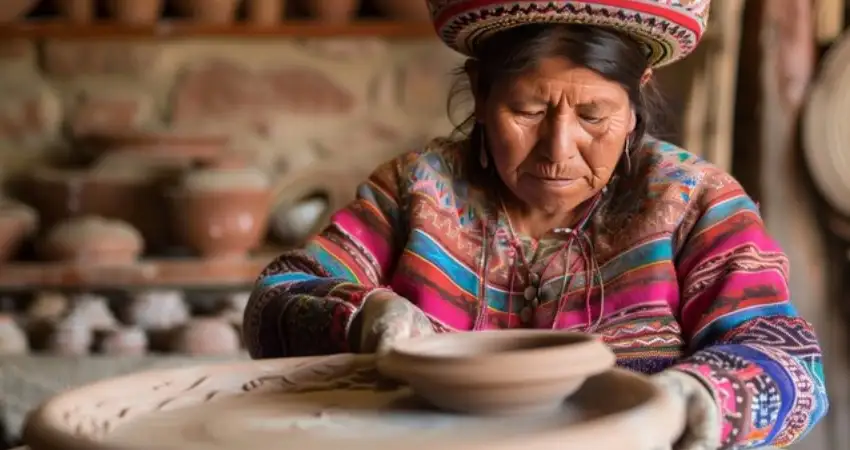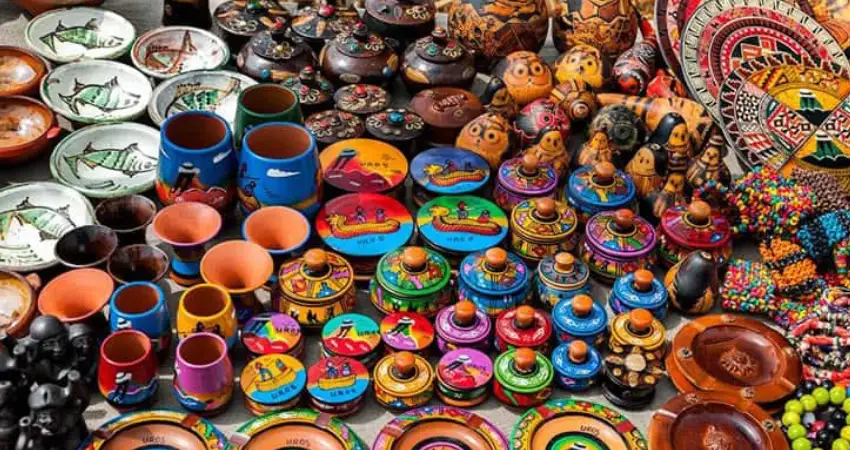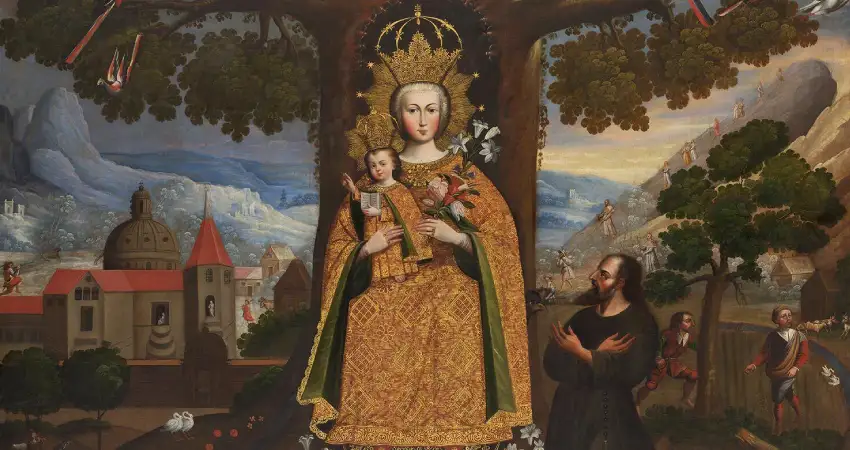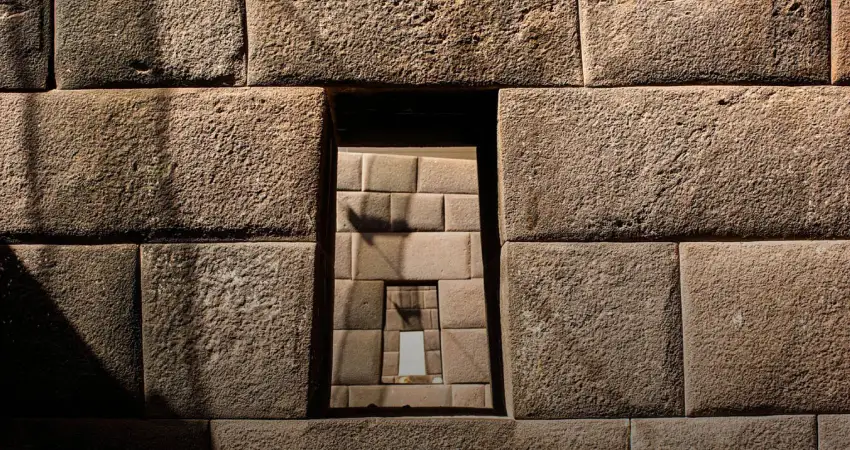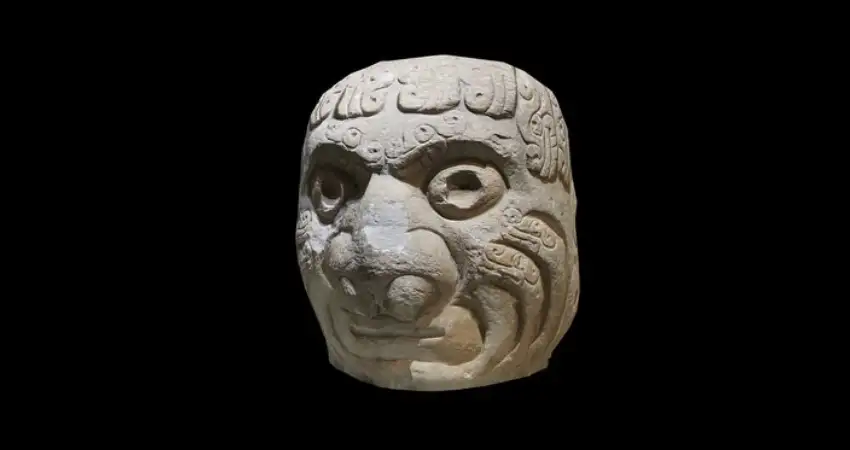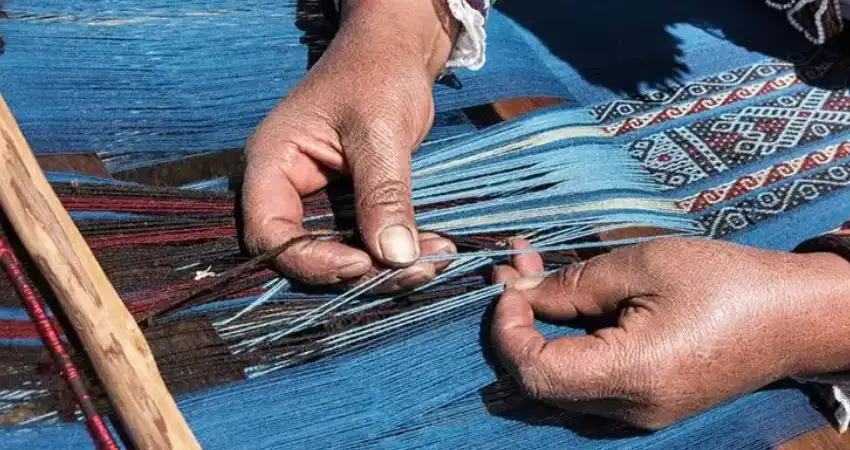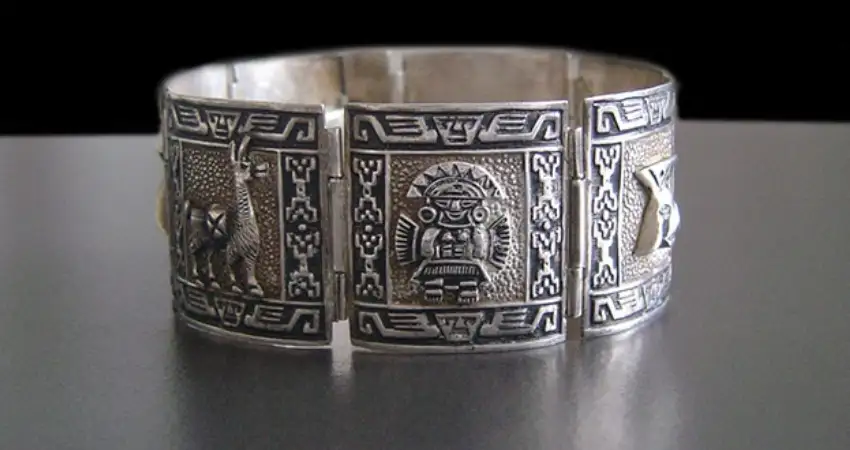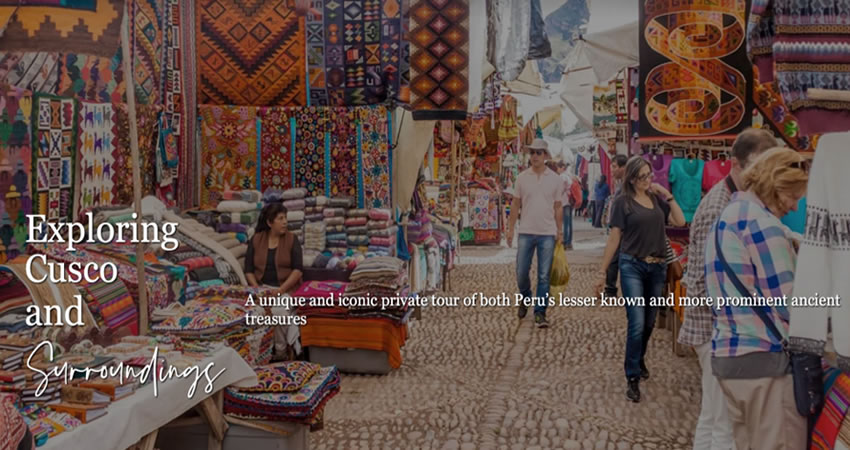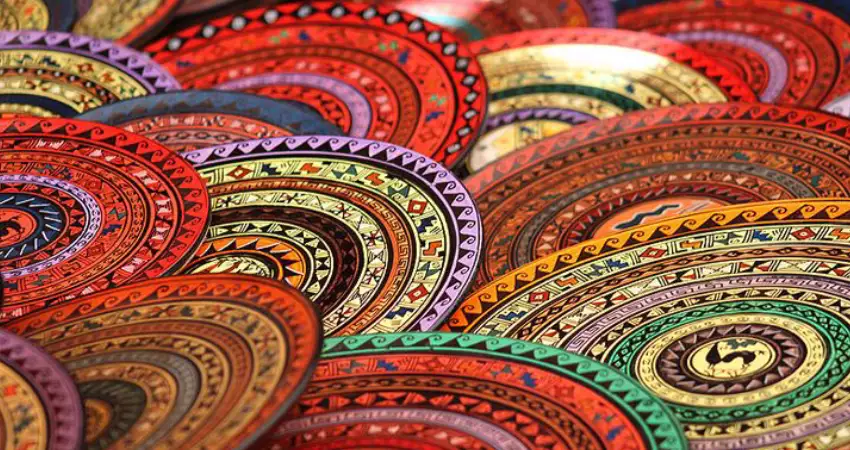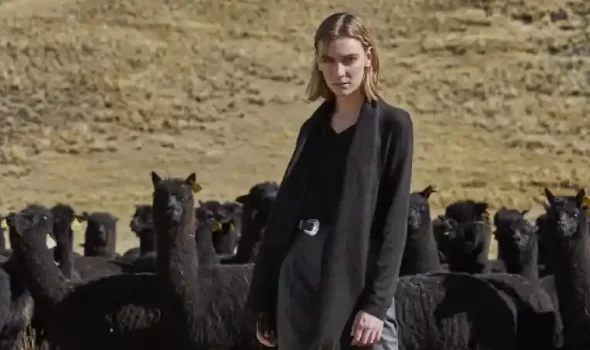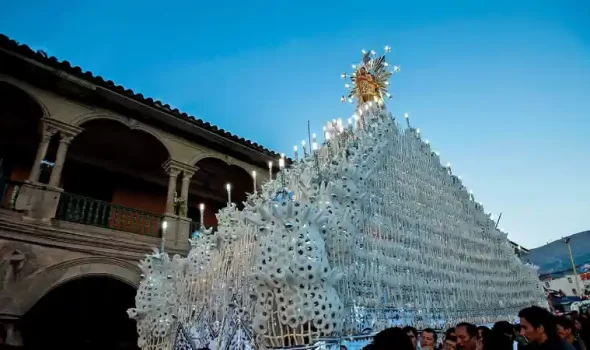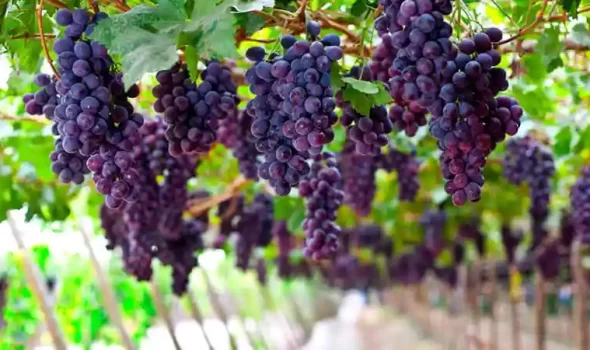1.- OVERVIEW OF THE PERUVIAN ART AND CRAFT
Although not popular, Peruvian Art and Craft is part of the cultural legacy that reflects the rich ancestral heritage that goes back thousands of years, from simple pieces made of wood, carved in stone, to incredible sculptures and ceramics belonging to multiple cultures such as the Moche, Nazca, Wari or Inca even passing through the colonial period belonging to the Spaniards. The Peruvian Art and Craft is expressed in various ways either through fine fabrics made with various elements, impressive ornaments made with despised metals such as gold and silver to finely crafted paintings that contain many syncretism of the mixture of cultures, this manifestation of identity and spirituality is maintained over time. At present the Peruvian Art and Craft is highly valued and being one of the main pieces of interest for private collectors in the world and in the same way for the Peruvian Ministry of Culture, they are unique pieces that should be preserved in important places such as museums.
2.- SOME POPULAR SAMPLES OF PERUVIAN ART AND CRAFT
2.1.- PAINTINGS
Within the Peruvian Art and Craft is undoubtedly one of the most popular samples, its origin dates back to colonial times in which multiple Spanish authors decided to capture part of the experience and history that they themselves witnessed in some uses that eventually became quite valuable, the practice of this Peruvian Art and Craft during the colony was also a way to express the strong syncretism that existed, the clearest example is how the representation of Catholic deities was combined with some Andean beliefs and in parallel the Andean deities were adapted in the sense of representing Satan or evil, as a result of this the Andean cosmogony is obtained, which is also known as the Andean belief, which gave a different perspective of both the Andean people and the Spanish descendants.
From this practice of creating the Peruvian Art and Craft from where the “Cusco Art School” was born, which today can be better appreciated in the popular museums around the historic center. There are even some places where you can practice the elaboration of Peruvian Art and Craft for kids which broadens the options to live the experience even with the family.
2.2.- ARCHITECTURE
A sample of Peruvian Art and Craft that remains standing even with the passage of time, are the buildings that have a great historical significance, although it does not have an exact beginning its history is divided into clear stages, beginning with the pre-Inca cultures and settlements were popular buildings such as Chavin, Mochica and Tiahuanaco are the greatest exponents of this representation of Peruvian Art and Craft. It continues with the Inca culture where there are very famous places visited by the whole world as the Qoricancha, Saqsayhuaman and Machu Picchu. It then passes to the colonial or viceroyal time where the construction modality changes and adapts a European style showing more baroque finishes that were mixed in a natural way with the Andean constructions, from this period colonial mansions and religious buildings such as the cathedral of Cusco stand out. Finally comes the republican era where the modernization stage begins, the French influence and historicism. This type of destinations are suitable for all travelers and even becomes a Peruvian Art and Craft for kids who are interested in history.
2.3.- CERAMICS
It is the most common aspect that exists among all cultures over time, the Peruvian Art and Craft expressed in ceramics tells the story in a different way in the sense of communicating to new generations about the traditions, it was also a way to express the representation of their gods (usually devised with zoomorphic figures). Throughout history it is known that this expression of Peruvian Art and Craft had a maximum exponent and it was the Chavin culture, who began to make clay pots with zoomorphic forms, followed by the Moche culture who represented in their ceramics the erotic art. Even today it is still a popular and frequent activity that regularly seeks to connect travelers with the culture, you can integrate the whole family in this as there is also the option of Peruvian Art and Craft for kids.
| “Travel is always the beginning of something new.” |
2.4.- TEXTILES
The clear representation that the Peruvian Art and Craft is part of the culture is the time that remains in history, Peru is one of the richest countries in textile heritage about 5000 years old. According to researchers some of the garments found even belong to the Caral culture also known as the oldest in America, the artisans prioritized placing inside their creations about daily life, environment, food and others.
Some other cultures also used this sample of Peruvian Art and Craft as part of their beliefs, the Paracas culture used many of the textiles for religious and funerary purposes which gave to understand the importance of the people who departed to the other world, in other cases as the Incas considered textiles as part of the social position, combined with other sacred elements such as jewelry made of gold or silver were intended only for royalty mainly. In this sample of Peruvian Art and Craft, priority was given to placing representative details of the culture such as geometric, zoomorphic and anthropomorphic figures. There are traditional villages that inherited the tradition of textiles until today and remains a fundamental part of their daily life, among the most popular is Ollantaytambo, Chinchero, Pisaq, Uros, Qeros and more.
2.5.- JEWELRY
This sample of Peruvian Art and Craft represents a relationship between tradition, culture and the beauty of fine finishes. The popularity that multiple cultures gained in the handling of precious metals became so well known that when the popular tomb of the Lord of Sipan was discovered everyone understood that the purest gold in all of Peru was found here, even the gold found in Cusco by the Spaniards were only metal alloys that simulated the fine work that was developed in Mochica. This practice is also very much maintained in artisan villages where modern artisans try to recreate unique works such as gold masks, casual jewelry such as necklaces, earrings and bracelets.
3.- MORE THAN JUST COMMERCIAL VALUE
“For many cultures the most valuable thing was always their Peruvian Art and Craft, even when the Spaniards arrived in Cusco looking for gold they discovered that this was only an accessory for them, the Incas believed that gold was the representation of the tears of the sun so it was used to create exclusive accessories for the ruler but had no sense of value for trade or other activity.”
4.- FAQs ABOUT THE PERUVIAN ART AND CRAFT
- What makes Peruvian art and craft unique?
Peruvian Art and Craft is unique thanks to the tradition that precedes its elaboration, a binary technique that is passed down for generations in order to preserve and maintain the culture. Each Peruvian artisan does not only create a piece of pottery, textile or jewelry, creates a unique piece of art.
- How can I identify authentic Peruvian art and crafts?
At first glance it is not easy to identify a Peruvian Art and Craft article, you would have to be accompanied by a specialist for this. However the best recommendation is that you can visit trusted places where authentic Peruvian Art and Craft material is sold, a clear example are the craft markets where it is easier to get them. Some of the most popular markets for this are the San Pedro market in Cusco, the handicraft market in Pisac and the town of Chinchero where you can find factories where textiles are made.
- Are there any famous Peruvian artists or artisans I should know about?
There are many Peruvian artists who make unique pieces of art, many of them are part of history but left a legacy. Among the most popular are artisans who lived in the neighborhood of San Blas and to this day keep open the doors of their old artistic studios such as Hilario Mendivil, Edilberto Merida and Antonio Olave.
- What are some popular Peruvian crafts to collect?
It mainly highlights the paintings, ceramics and jewelry. However, it is also very common that people like to look for textiles or garments made of alpaca wool or baby alpaca, which makes it much finer.
Peruvian Art and Craft certainly has no comparison and you could get a piece of this during your 2024 trip, you just need to know where to do it. Auri Peru can help you organize a purposeful trip where you can connect with the culture and get a unique souvenir. Contact us now and take the first step in this new adventure.
“Work fills your pockets, but a trip fills your soul.”




